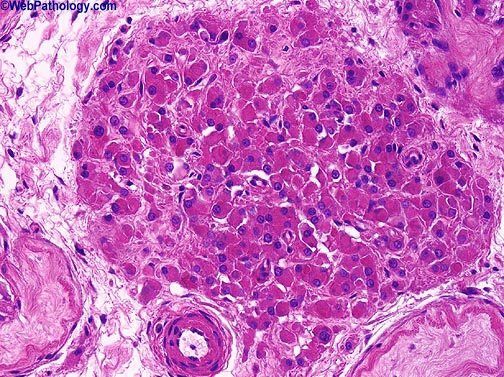Leydig cell hypoplasia
: a rare autosomal recessive genetic and endocrine syndrome that affects male sexual development.
characterized by: underdevelopment (hypoplasia) of Leydig cells in the testes.
Leydig cells function: secrete androgen that are important for normal male sexual development before birth and during puberty.
Affected person: typical male chromosomal pattern (46,XY),
have a small penis (micropenis), the opening of the urethra on the underside of the penis (hypospadias), and a scrotum divided into two lobes (bifid scrotum), ambiguous genitalia.
They do not develop secondary sex characteristics, such as increased body hair, at puberty.
Mutations in the LHCGR gene cause Leydig cell hypoplasia.
The LHCGR gene provides the luteinizing hormone/chorionic gonadotropin receptor.
In males: chorionic gonadotropin stimulates the development of Leydig cells in the testes and LH cause produce androgens like testosterone that control male sexual development and reproduction.
In females: LH triggers the release of egg cells from the ovary (ovulation). Chorionic gonadotropin is produced during pregnancy and helps maintain conditions necessary for the pregnancy to continue.
Leydig cell hypoplasia: disrupt LH/chorionic gonadotropin receptor function.
In males: poorly developed or absent Leydig cells and impaired production of testosterone.
A lack of testosterone: poorly development of male sexual organs before birth.
http://onlinelibrary.wiley.com/doi/10.1046/j.1464-410X.1998.00503.x/pdf
http://press.endocrine.org/doi/pdf/10.1210/jc.2004-0298
http://link.springer.com/chapter/10.1007/978-1-4419-8002-1_32

No comments:
Post a Comment